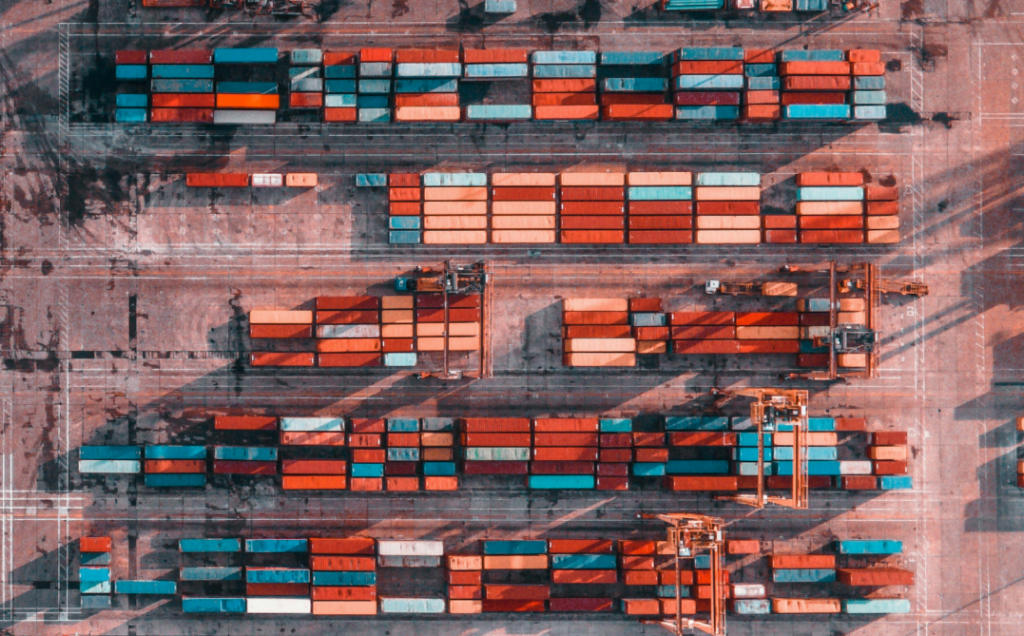Third-party logistics transportation is crucial in optimising supply chains and ensuring smooth business operations across various industries. This article aims to comprehensively understand third-party logistics transportation, covering its benefits, key components, working mechanisms, trends, considerations for choosing a provider, challenges, and solutions.
What are third-party logistics (3PLs)?
Third-party logistics (3PLs) are external providers specializing in managing and executing various logistics and supply chain functions on behalf of businesses. These services encompass transportation, warehousing, distribution, and fulfilment. The benefits of engaging 3PLs include cost savings through economies of scale, improved efficiency as experts handle logistics complexities, enhanced flexibility to adapt to market fluctuations, and access to advanced technologies for real-time tracking and optimization. By outsourcing logistics to 3PLs, companies can focus on core competencies, reduce operational burdens, and achieve a more agile and responsive supply chain.

Benefits of Third-Party Logistics Transportation
Cost savings and efficiency
One of the primary advantages of third-party logistics transportation is the potential for cost savings and improved operational efficiency. By leveraging the expertise and economies of scale offered by 3PL providers, companies can optimise their transportation processes, reduce overhead costs, and achieve greater supply chain efficiency.
Access to expertise and specialized services
Another benefit is access to specialised services and expertise. Third-party logistics providers often have extensive industry knowledge and experience handling specific transportation requirements, such as temperature-controlled shipments or hazardous materials. This expertise ensures compliance with regulations and industry standards, minimising risks and ensuring the safe delivery of goods.
Scalability and flexibility

Key Components of Third Party Logistics Transportation
Understanding the critical components of third-party logistics transportation is essential for comprehending its overall functioning and impact on supply chains. These components include:
Supply Chain Management
Effective supply chain management is at the core of third-party logistics transportation. It encompasses the harmonisation and seamless integration of diverse functions, such as procurement, manufacturing, efficient inventory control, and streamlined distribution, to facilitate the uninterrupted movement of products from suppliers to final consumers.
Inventory Management
Proper inventory management is crucial for optimising transportation processes. Third-party logistics providers employ advanced systems and technologies to track and manage inventory levels, ensuring accurate stock availability and minimising stockouts or overstock situations.
Reverse Logistics
Reverse logistics refers to managing the return and disposal of products, including repairs, refurbishments, recycling, or disposal. Third party logistics providers play a significant role in handling reverse logistics, efficiently managing returns, and minimising associated costs.
Cold Chain Logistics
Cold chain logistics involves transporting temperature-sensitive goods, such as pharmaceuticals, perishable food items, or biomedical products. Specialised 3PL providers are proficient in managing cold chain logistics to guarantee product quality and integrity preservation by implementing precise temperature control measures throughout the storage, handling, and transportation.
Intermodal Transportation
Intermodal transportation optimises goods movement by seamlessly incorporating various transportation modes, including trucking, rail, air, and sea, to enhance efficiency and streamline logistics. Third-party logistics providers optimise intermodal transport, determining the most cost-effective and timely delivery routes.

How Third Party Logistics Transportation Works
Finding the right third party logistics provider
Businesses must evaluate potential providers based on their expertise, industry experience, service offerings, and geographic coverage. This selection process ensures the alignment of business requirements with the capabilities of the chosen provider.
Collaborating and sharing information
Effective communication and collaboration between the company and the 3PL provider are crucial. Sharing relevant information, such as shipment details, product specifications, and customer requirements, enables the provider to plan and execute transportation operations effectively.
Monitoring and tracking shipments
Third-party logistics providers utilise advanced tracking technologies to monitor the movement of goods throughout the transportation journey. Real-time visibility allows businesses to stay informed and address any potential issues promptly.
Managing exceptions and resolving issues
Despite careful planning, exceptions and disruptions can occur during transportation. Third-party logistics providers work closely with businesses to manage exceptions, resolve issues, and ensure minimal impact on the overall supply chain.
Trends and Innovations in Third Party Logistics Transportation
The landscape of third-party logistics transportation continues to evolve with technology integration and innovative practices. Some noteworthy trends and innovations include:
Integration of technology and data analytics
A remarkable shift is taking place in the logistics industry as it embraces state-of-the-art technologies like the Internet of Things (IoT), artificial intelligence (AI), and advanced big data analytics. This transformative adoption is driving substantial changes in the overall landscape of the sector. These innovative tools are reshaping operational methodologies, leading to a revolution in practices and significantly improving overall efficiency. These technologies provide real-time data insights, predictive analytics, and automation, improving efficiency, visibility, and decision-making in third-party logistics transportation.
E-commerce logistics and last-mile delivery
With the rapid growth of e-commerce, third-party logistics providers are adapting their services to cater to the unique requirements of online retail. Last-mile delivery solutions, such as local delivery networks and locker systems, are employed to enhance customer satisfaction and reduce delivery time.

Considerations for Choosing a Third Party Logistics Provider
Selecting the right third-party logistics provider requires careful evaluation and consideration of various factors. Some key considerations include:
Evaluating expertise and experience
Assess the provider’s industry knowledge, experience, and track record in handling transportation operations relevant to your business. Ensure they possess expertise in temperature-controlled shipments, specialised handling, or international logistics.
Assessing infrastructure and capabilities
Evaluate the provider’s infrastructure, including its fleet of vehicles, warehousing facilities, and technology systems. Consider whether their capabilities align with your specific transportation needs and volumes.
Analysing costs and pricing models
Understand the provider’s pricing structure and evaluate the costs associated with their services. Compare pricing models, including fixed rates, variable rates, or transaction-based fees, to determine the most cost-effective option for your business.
Ensuring compatibility and communication

Challenges and Solutions in Third Party Logistics Transportation
While third-party logistics transportation offers numerous benefits, it also has challenges. Understanding these challenges and finding appropriate solutions is crucial for ensuring smooth operations:
Potential risks and disruptions
External factors such as weather conditions, traffic congestion, or labour disputes can lead to transportation delays or disruptions. Mitigating these risks requires proactive planning, contingency strategies, and collaboration between the business and the 3PL provider.
Mitigating risks and ensuring resilience
Implementing risk management strategies, such as diversifying transportation routes or maintaining safety stock, helps minimise the impact of disruptions. Maintaining clear lines of communication and visibility with the provider enables timely decision-making and problem-solving.
Collaborative Approaches and partnerships
Nurturing robust collaborative partnerships with third-party logistics providers and key stakeholders within the supply chain can prove instrumental in effectively tackling challenges and overcoming obstacles. Sharing information, aligning goals, and fostering trust contribute to mutually beneficial partnerships.
Recommended options
Understanding third-party logistics transportation is crucial for businesses aiming to optimise their supply chain management, enhance efficiency, and access specialised transportation expertise. Companies can concentrate on their core strengths while enjoying cost savings, scalability, and flexibility by entrusting their transportation requirements to dependable third-party logistics providers. As the logistics landscape continues to evolve, embracing trends, considering sustainability, and choosing the right 3PL provider is vital to achieving success in the dynamic world of transportation.
If you are seeking expert third-party logistics transportation solutions, visit Howely.com.sg. Our experienced team and advanced technology ensure streamlined transportation operations, cost efficiency, and exceptional customer service—partner with us for seamless supply chain management and transportation optimisation.



